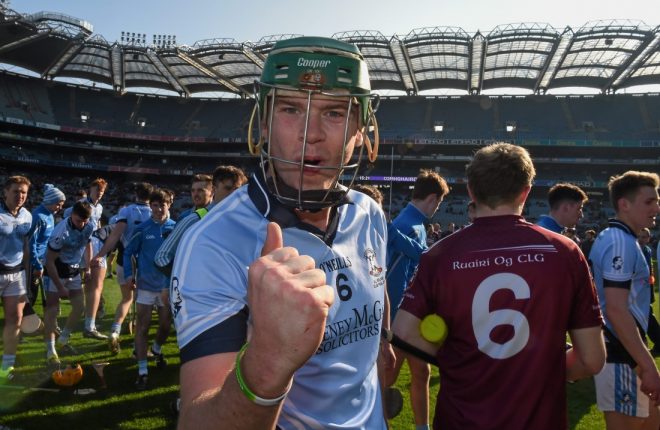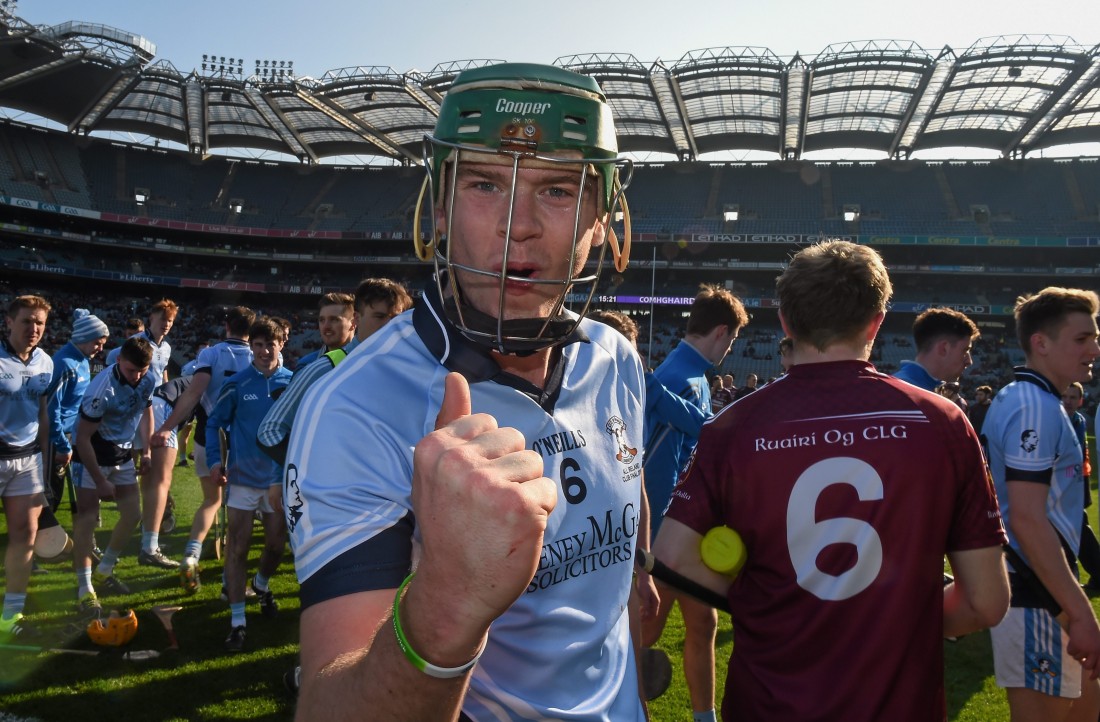
Na Piarsaigh’s Ronan Lynch
Two headlines have sat side by side on the RTE website for the past week. One states that ‘Ballyboden stroll to a first club football success’ and the other that ‘Na Piarsaigh storm to maiden hurling club title’.
More than likely, the sub-editor who penned the headlines chose a different slant on the respective victories in the hurling and football club championship finals in order to avoid that cardinal journalistic sin of repetition, but in doing so probably nailed a subtle difference in the manner of each success.
While Ballyboden were never forced out of second gear over the 60 minutes of the football decider, Na Piarsaigh produced as sublime a performance as anything they have had to produce to get out of Munster in the last five years. And maybe that’s where the difference lay: in the experience gained from three Munster championship wins in five years, and the heartbreak of two All-Ireland semi-final defeats. Eleven of the Na Piarsaigh line-up started the All-Ireland semi-final defeat to Portumna two years ago. Cushendall had five of the starting 15 that tasted that heart-breaking defeat to De La Salle of Waterford back in 2009.
And while it’s not as simple as saying that the team that had been hurt more by defeat at this level were the more driven, it certainly helps to have had more big days under belt when you step out on Croke Park. Cushendall froze slightly on the day but in truth I don’t think there was a team in Ireland that was going to stop Na Piarsaigh from lifting the title.
Cushendall looked on paper to have all the match-ups right but in but Adrian Breen, Alan Dempsey, Shane Dowling, Kevin Downes and Peter Casey, Na Piarsaigh had five players who were absolutely on top of their game from the throw-in. It’s not often that every one of the big name players on a team stand up on the same day, but that happened for Na Piarsaigh last Thursday. And sometimes you just have to sit back and watch a great exhibition of hurling.
Not that Cushendall did that – in fact I thought there was some great passages of play from the Antrim champions – but they were always on the back foot, always working that bit harder to get scores.
There was the usual list of ifs and buts – Cushendall should have had a penalty just before Na Piarsaigh’s second goal, and they will also be disappointed with some of the wides – but this was a comprehensive win for the Limerick city side who became the first Treaty team to lift a trophy at Croke Park since 1973.
Despite the one-sided football affair that followed the hurling final, it was the structure of the hurling championship that came under more scrutiny in the post-club finals post-mortems with calls for the Galway and Ulster champions to be included in the Leinster championship.
The inference is that their inclusion would put an end – or at least make it less likely – that there’d be a one-sided showpiece final. I’m not sure that it solves the problem though. The example used to add weight to the suggestion was the semi-final clash between Oulart the Ballagh and Na Piarsaigh. Sure it was a great game, but there have been plenty of mismatches between Leinster and Munster teams down the years also.
Of all the bizarre, baffling, contrived, unfit for purpose structures that exist within the vast network of GAA competitions, there are numerous leagues and championships that require attention before the club championships. The last Congress decided that the club championships aren’t of high enough importance to move the All-Ireland hurling final to August, or indeed to make the playing of extra-time obligatory for the majority of county championship games which would allow the completion of the club championships in the same calendar year.
That’s the single biggest change that needs to be made. Some club championships begin in May, with the All-Ireland final being held in March of the following year. That’s a competition with at most 10 games spread out over as many months. Added to that the gap between the provincial finals and the All-Ireland semi-finals – in Ulster it’s usually around three-and-a-half months – and that adds huge expense on to the preparation costs, particularly for Ulster teams who are faced with greater travel and accommodation costs for challenge games than the other provinces.
Cushendall set a target of £10,000 on their funding page. Surely a championship that was completed in the calendar year that went from county to provincial to All-Ireland – without the three-month gap – would cut down considerably on the costs involved in travelling to play challenge games down south?
It would also allow county managers like PJ O’Mullan and TJ Ryan to have all of their players available to them for the Allianz League. I don’t think either manager would be in the position they are this week had they had a full pick of their players. Antrim have completed their league programme with just two wins, while Limerick missed out on promotion from 1B against Clare at the weekend – minus all of their Na Piarsaigh players.
It’s been the same for years of course – the Galway and Antrim champions in particular are most regularly hit – and when a county don’t have the strength in depth, as is proving the case with Antrim this season, it makes the difference between a shot at promotion and another season in the lower division.
Receive quality journalism wherever you are, on any device. Keep up to date from the comfort of your own home with a digital subscription.
Any time | Any place | Anywhere












